The study of fundamental, basic flow problems will be carried out in WP1, which is concerned with normal and oblique SBLIs occurring in rectilinear geometries. The WP1 is focused on investigations involving different Mach and Reynolds numbers and two upstream conditions: laminar and turbulent boundary layers. The objective is (1) to qualify the response sensitivity of SBLI to local perturbations, (2) to obtain information on the instantaneous three-dimensional structure of the SBLI and to characterise the three-dimensional dynamics within the interaction, (3) to provide detailed information on the effect of corner separations on the unsteadiness of transonic/supersonic SBLIs, (4) to identify best suited regions to install new control devices (passive or active) in order to influence the separation and the unsteadiness of the interaction.
The influence of flow three-dimensionality on the unsteadiness of the interaction pattern will be investigated experimentally and numerically by means of Large Eddy Simulations (LES) and Direct Numerical Simulations (DNS). This will help to understand the impact of turbulence modelling on the accuracy of predictions and to develop reduced-order model.

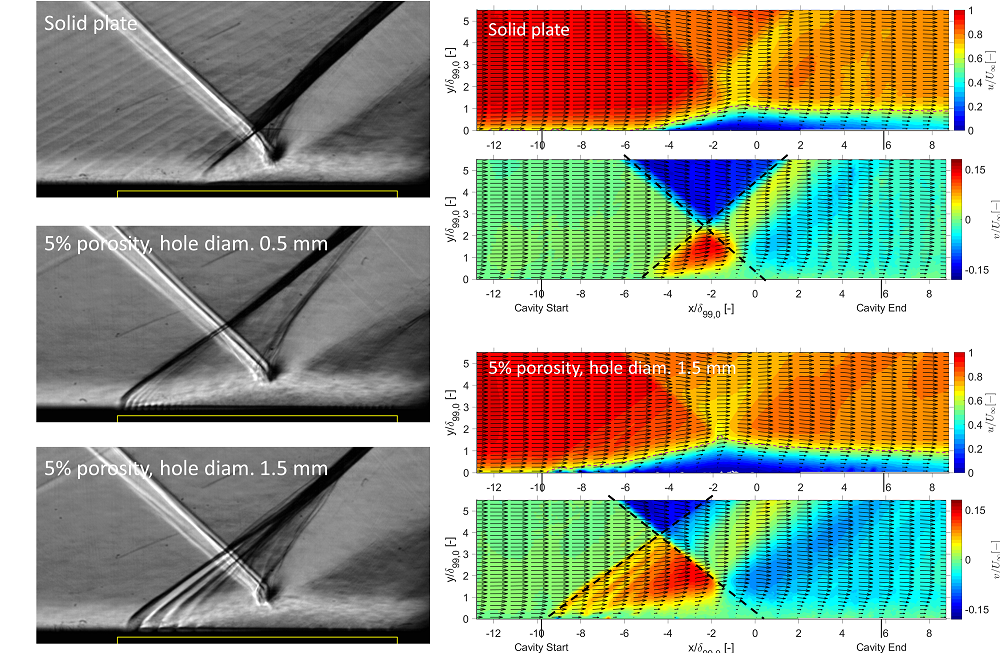
The study of fundamental, basic flow problems will be carried out in WP1, which is concerned with normal and oblique SBLIs occurring in rectilinear geometries. The WP1 is focused on investigations involving different Mach and Reynolds numbers and two upstream conditions: laminar and turbulent boundary layers. The objective is (1) to qualify the response sensitivity of SBLI to local perturbations, (2) to obtain information on the instantaneous three-dimensional structure of the SBLI and to characterise the three-dimensional dynamics within the interaction, (3) to provide detailed information on the effect of corner separations on the unsteadiness of transonic/supersonic SBLIs, (4) to identify best suited regions to install new control devices (passive or active) in order to influence the separation and the unsteadiness of the interaction.
The influence of flow three-dimensionality on the unsteadiness of the interaction pattern will be investigated experimentally and numerically by means of Large Eddy Simulations (LES) and Direct Numerical Simulations (DNS). This will help to understand the impact of turbulence modelling on the accuracy of predictions and to develop reduced-order model
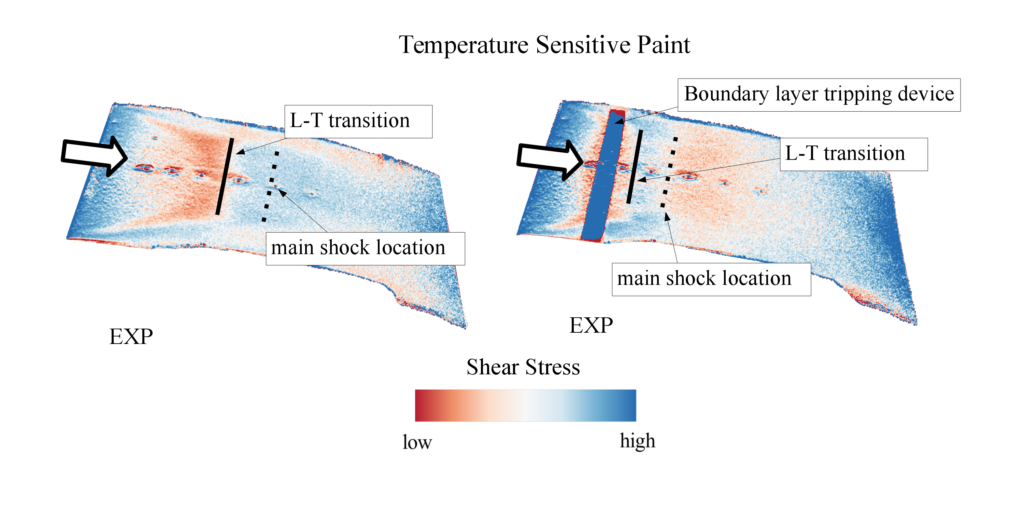
Roughness patch effect on shear stress on transonic compressor airfoil
visualised by Temperature Sensitive Paint (IMPPAN)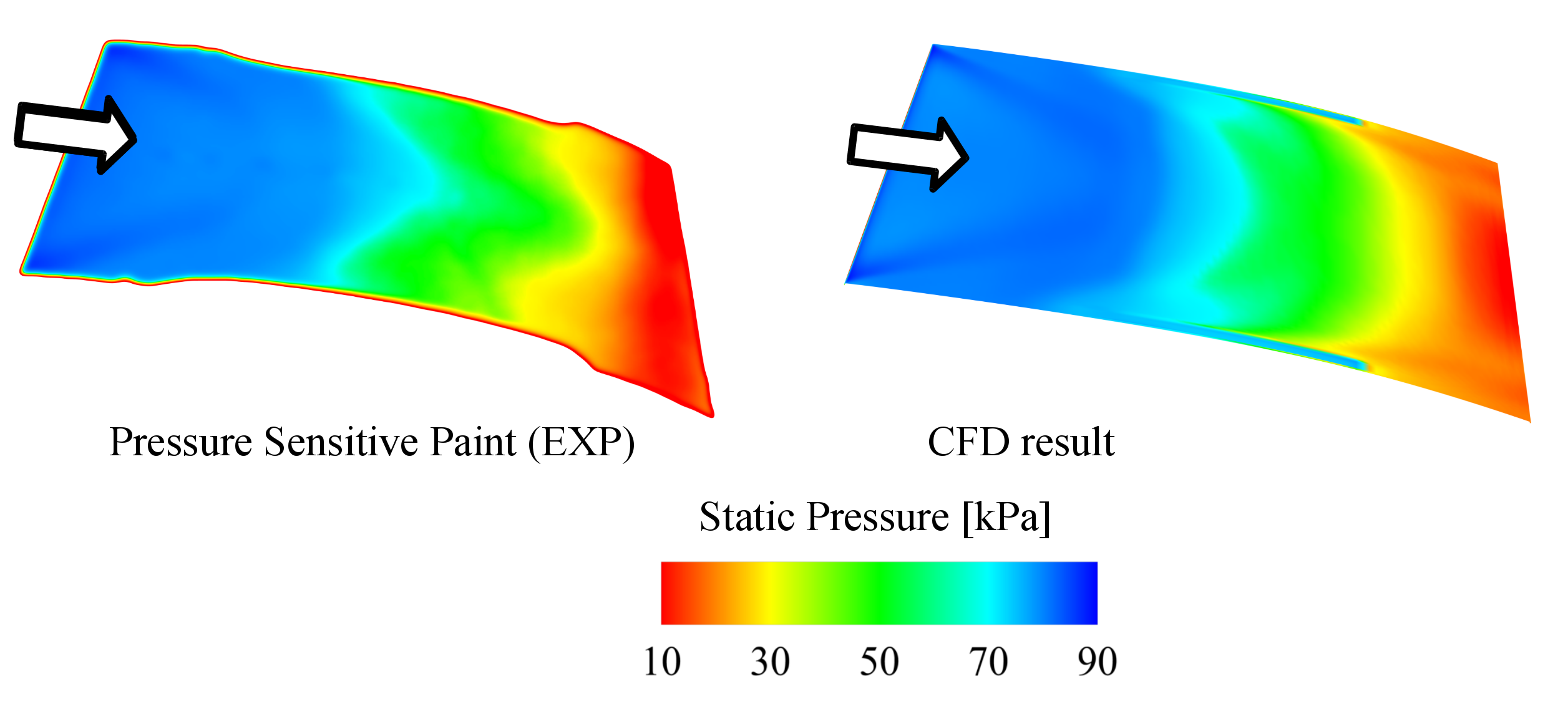
Pressure measured by Pressure Sensitive Paint and predicted by CFD
on transonic compressor airfoil in test section (IMPPAN)
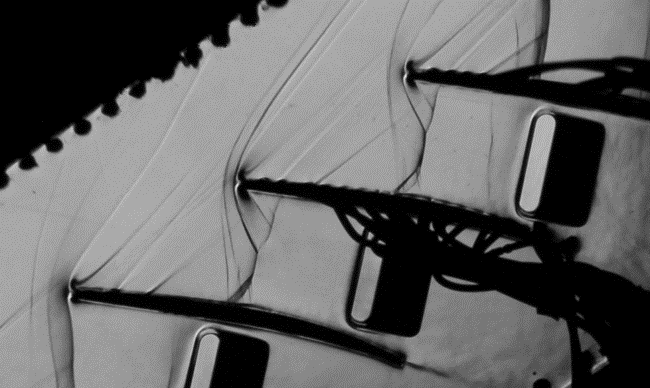
Shock wave structure in transonic compressor cascade (DLR)

Fan blades – Vitual Reality as visualisation technology in aviation (RRD)
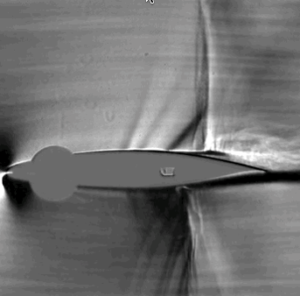
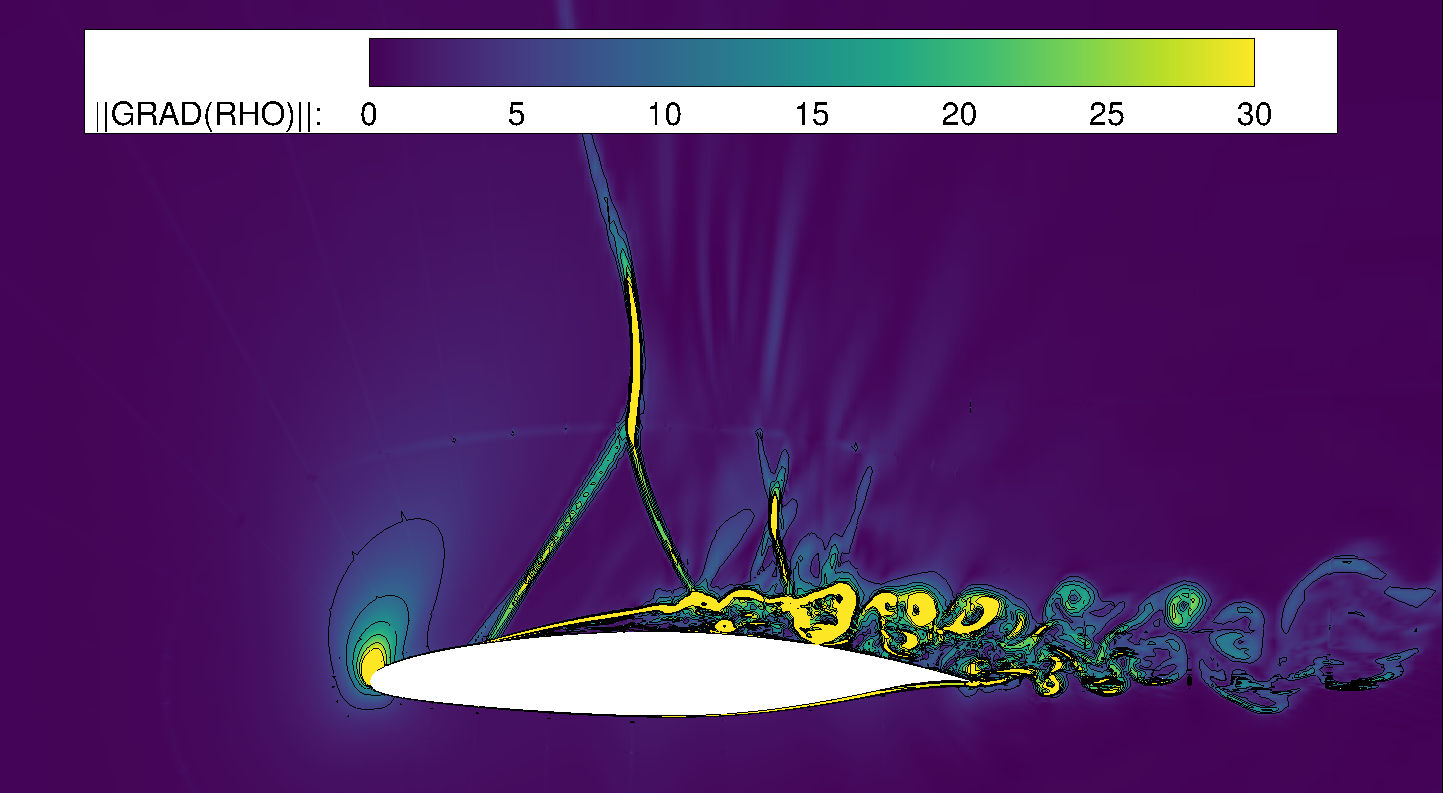
In the context of the basic and applied studies, it is important to learn and gain experience in the use of state-of-the-art measurements as well as innovative experimental and CFD methods. The objective of WP4 is to drive the development of novel techniques and also to help all the ESRs in the selection of the most appropriate methodology for their specific flow problem. The ESRs will be supervised to develop and practise advanced measurement techniques such as spectral measurements with Dual-PIV (Particle Image Velocimetry), tomographic-PIV and dual-tomo-PIV systems, two-point measurements with one-component LDA (Laser Doppler Anemometry) or hot-wire probes, pressure-sensitive paint (PSP, including unsteady effects). The database of the experimental results will be exploited by the ESRs for comparisons with CFD results. Numerical simulations will be carried out by means of a wide range of methods: starting from (U)RANS (Unsteady Reynolds Averaged Navier Stokes), DDES (Delayed Detached Eddy Simulations), and finishing on LES and DNS for the basic configurations. In all cases, time-resolved measurements will be used to qualify the unsteadiness. The characteristic time scales of these flows extend over more than 3 decades of frequency. This is extremely challenging for the measurement systems as well as for the computational methods. Moreover, for the laminar cases, very high spatial resolutions are required (e.g. a boundary layer thickness of less than 1 mm). All this justifies a special WP dedicated to the development and the dissemination of accurate methods. WP4 will also be the focal point for collecting results and drawing conclusions across the WPs.
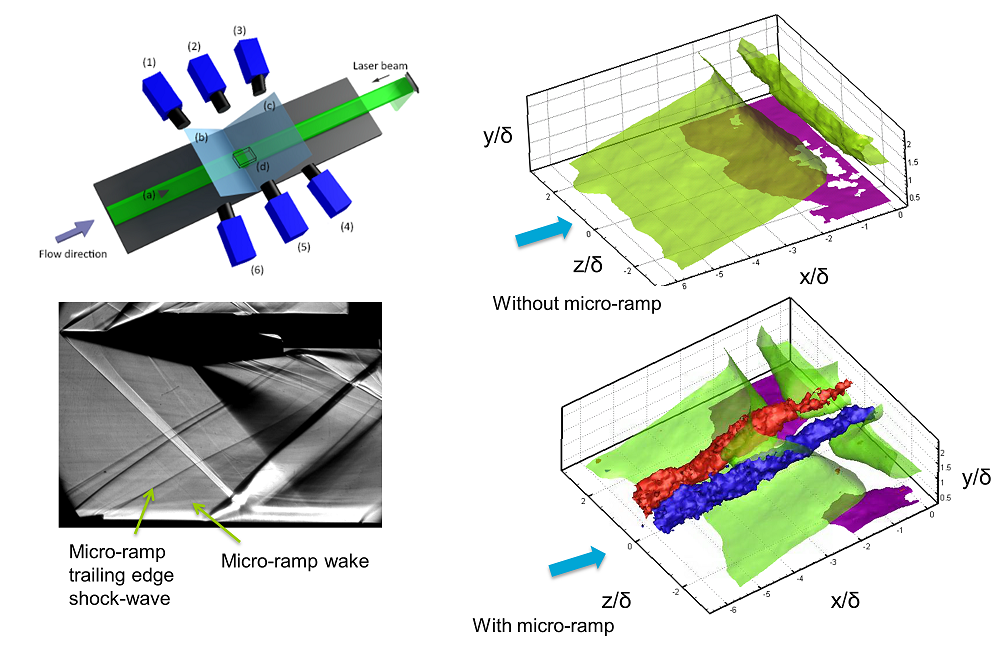
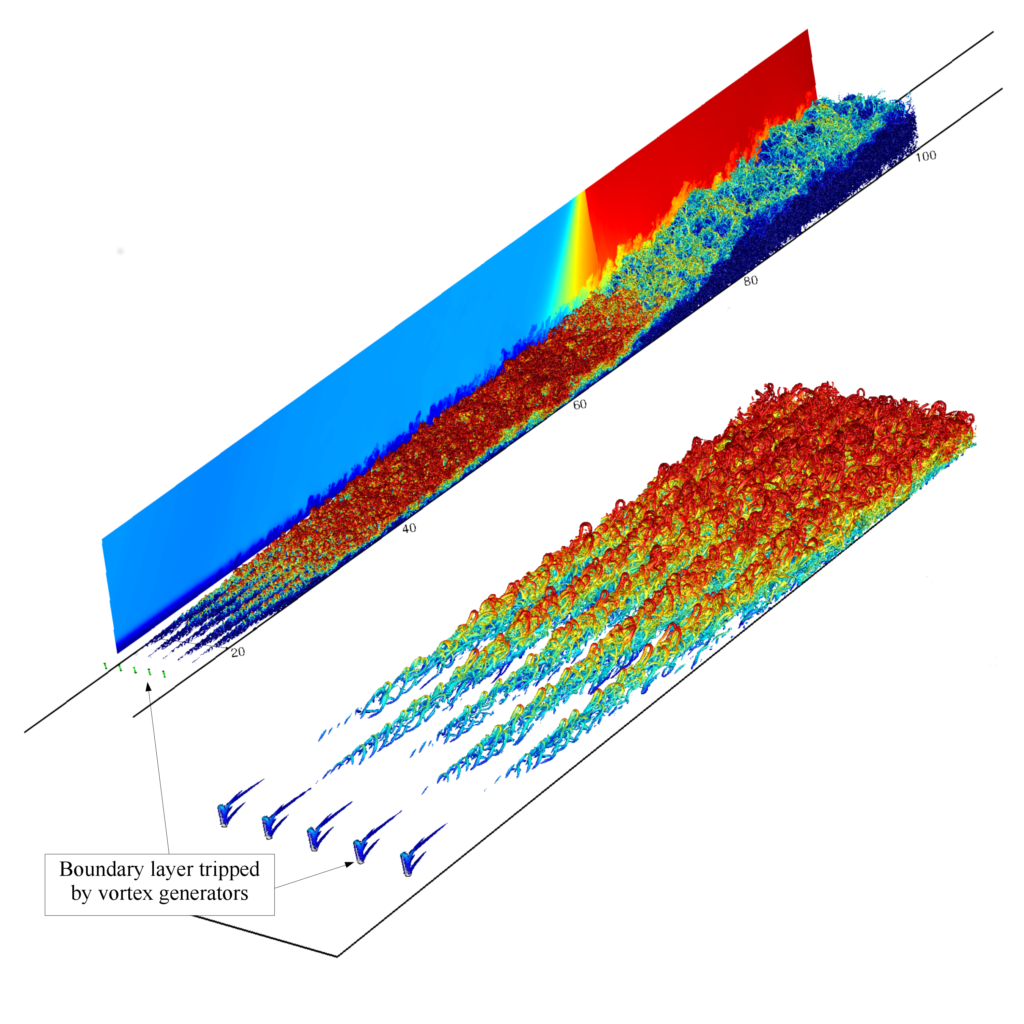
Training programme includes selected scientific knowledge applicable to the research performed in this project and also researcher skills to enable and enhance future career progression within the wider field of science and technology research and management. The WP5 objective is (1) to train young researchers in a wide range of specialist and transferable skills and (2) to ensure optimum dissemination of the research outcomes through the organization of a workshop and the coordination of research publications and presentations across a wide range of conferences, workshops and scientific journals.
The main objective of WP6 is to ensure the good coordination of the management, scientific and training activities.
The objective is to ensure compliance with the ‘ethics requirements’ set out in this work package. The ethical standards and guidelines of Horizon2020 will be rigorously applied, regardless of the country in which the research is carried out.